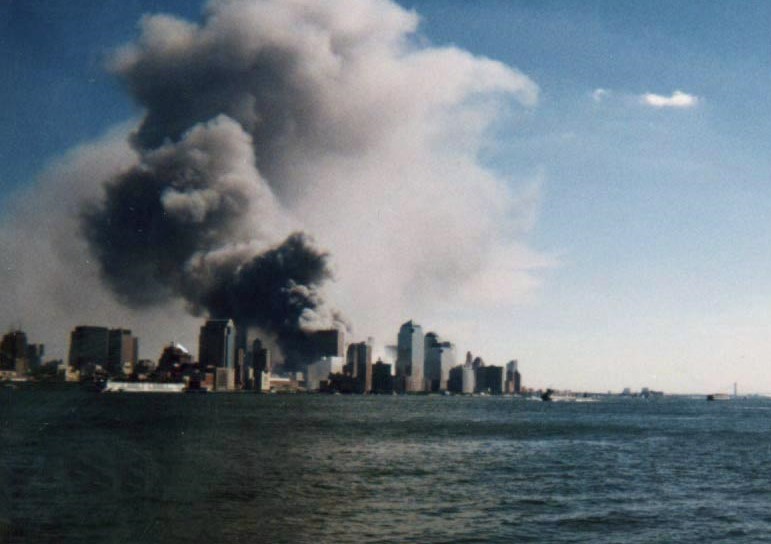The horror of 9/11 changed aviation forever
10 September, 2021
6 min read


Few events until the recent pandemic have rocked the aviation industry as much as the September 11 2001 attacks on the World Trade Center and the Pentagon.
Nobody who watched the event on television will forget the shock of seeing aircraft slam into the buildings, the images of people jumping to their deaths and the horrifying vision of the buildings collapsing.
American Airlines Flight 11 and United Airlines Flight 175 slammed into the World Trade Center 17 minutes apart while American Airlines Flight 77 crashed into the west side of the Pentagon.
A struggle between passengers and terrorists saw United Airlines Flight 93 crash into a Pennsylvania field rather than its intended target in Washington, DC.
READ: Singapore Airlines fears poor consultation could undermine Aussie border opening
As International Air Transport Association director-general Willie Walsh noted in a commentary on the attack this week: “Two decades later, we are still living with their consequences, including a vastly expanded security and intelligence apparatus that overlays air travel.”
“This is most visible at airport security checkpoints, although arguably the most intrusive post-9/11 changes—removing shoes at checkpoints, taking laptops and liquids out of carry-on bags and strict limits on liquids and gels in carry-on bags—are the result of subsequent, compounding terrorist plots against civil aviation. “
The good news is that Walsh believes the industry is more secure today with advances such as armored cockpits doors, explosives detection screening and other steps.
“Through the International Civil Aviation Organization (ICAO) the baseline of security measures required of states has significantly progressed,’’ he said.
“We also see much stronger political will by some key governments to help raise the bar globally, including helping to fund other countries to enable them to meet their security obligations.
“Anything less than universal compliance with ICAO standards is not acceptable. We are more secure, but security is a constantly evolving challenge.”
READ: United inks world's biggest sustainable aviation fuel deal
This doesn’t mean that Walsh believes aviation has become too hard a target and he said the industry is likely to attract continued interest.
“But the nature of countermeasures, both physical and identity-based have and continue to successfully defend the industry against terrorism.
“The latest effort on insider threat has also ensured new vulnerabilities and risks have been proactively managed to acceptable levels.”
Nonetheless, he noted there was always room for increased efficiency in the face of a challenging dynamic.
“We must stay ahead of emerging security threats,’’ he said.
“To do this effectively we need to take a more integrated approach on things like cyber risks, drones, and insider threats.
“We also need to have effective controls to ensure business continuity and resilience no matter the source and/or reasons for the interference.”
THE AFTERMATH
The impact of 9/11 was most acutely felt in the years immediately following the atrocity, but a timeline compiled by IATA staff shows the implications stretched over the next two decades as terrorists continued to target aviation. The immediate impact was to see aircraft in the United States grounded and those eerie pictures of skies without traffic. US airports handled 38,407 commercial flights on September 10; on September 12 there were 252. Watch the time-lapse video of traffic disappearing from US skies: [embed]https://www.youtube.com/watch?v=bo1ZtpKqlYw[/embed] US passenger traffic would remain depressed and would not reach 2000 levels until 2004 while US airlines would post a net loss of $US8 billion in 2001 compared to $US2.2 billion in 2000. Globally, airlines lost $US13 billion in 2001. Regulators also directed airlines to retrofit their fleets with locked and fortified cockpit doors. The days of going up to the cockpit to see the pilots were abruptly over. Restrictions were also placed on the carriage of previously allowed sharp objects such as penknives, box cutters and nail files. Some states would also ban cigarette lighters and matches. The industry was threatened with a shutdown when aviation insurers moved to cancel third-party war-risk insurance, prompting governments to step in until the private sector returned to the market.THE AVIATION CHANGES DID NOT STOP WITH 9/11
There was an accelerated move to 100 percent checked baggage screening and, as a result of the December 2001 “shoe-bomber plot”, shoes had to be removed in the US and a number of other countries and screened separately. The discovery of the August 2006 Trans-Atlantic bomb plot to detonate liquid explosives on a flight, passengers were initially banned from carrying gels and liquids in their cabin baggage. This was later amended to allow people to carry liquids and gels in a 100 ml (3.4 oz) container and all liquids needed to fit into a transparent plastic bag (1 litre/1 quart size). Other rules required all laptops and other electronic equipment to be removed from bags and scanned separately. In addition, the UK imposed a restriction of one piece of hand luggage per person, which remained in place until January 2008. READ: SITA wields one COVID platform to rule them all The “Underwear Bomber”, who attempted to detonate an improvised explosive device concealed in his underwear in December 2009, led to the widespread introduction of controversial full-body scanners at airport security checkpoints. A November 2010 attempt to ship explosives concealed in printer cartridges aboard two cargo aircraft saw air cargo shipments to the United States from Yemen suspended indefinitely and printer cartridges banned from carry-on bags. There was some relief for US travelers with the introduction of the TSA Precheck "known traveler program" in 2011. This allowed people who had signed up for the program to be expedited through security. The 2015 destruction of a Metrojet passenger flight en route from Sharm El Sheikh in Egypt to St Petersburg led to a new focus on insider threats after investigators concluded it was likely caused by a bomb. In March 2017, responding to intelligence, the US banned electronic devices larger than a cell phone from the passenger cabins of US-bound commercial flights from ten airports in the Middle East and North Africa. In June, the US introduced enhanced screening of electronic devices, more thorough passenger vetting, and new measures designed to mitigate the potential threat of insider attacks. In July 2017, there was a hold baggage security plot to blow up an Etihad aircraft flying from Sydney, spawning chemical and powders-based cabin baggage checks that remain in place today.Next Article
2 min read
Qantas triples profit but misses mark

Get the latest news and updates straight to your inbox
No spam, no hassle, no fuss, just airline news direct to you.
By joining our newsletter, you agree to our Privacy Policy
Find us on social media
Comments
No comments yet, be the first to write one.
